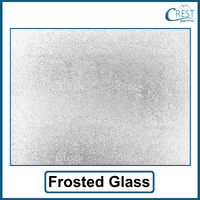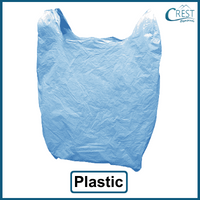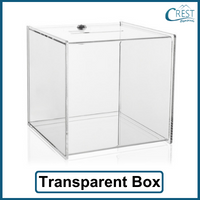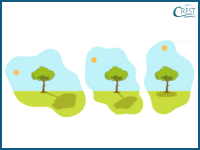1. Which of the following materials would create the most distinct and sharp shadow?
a) 
b) 
c) 
d) 
Answer: d) Cardboard would create the most distinct and sharp shadow because it is an opaque material that does not allow light to pass through. Unlike frosted glass, clear plastic, and transparent boxes, which can allow some light to pass through and create diffused or less-defined shadows, cardboard blocks the light completely, resulting in a well-defined shadow.
2. Raymond wants to investigate how the size of a shadow changes with the position of the light source. Which of the following activities can he undertake to conduct his investigation?
a) Use a flashlight and different objects to cast shadows on a wall.
b) Measure the length of a shadow at different times of the day.
c) Observe the shadow of a tree throughout the day.
d) Watch the lunar eclipse.
Answer: a) This option allows Raymond to actively manipulate the position of the light source (the flashlight) and observe how it affects the size and shape of the shadows cast by different objects. By experimenting with various objects and light positions, he can gather data and analyse how the size of the shadow changes accordingly.
3. Why do shadows appear darker in the umbra compared to the penumbra?
a) The object completely blocks the light in the umbra.
b) The penumbra receives more direct light from the source.
c) The penumbra is closer to the light source.
d) The object reflects light in the penumbra.
Answer: a) Shadows appear darker in the umbra compared to the penumbra because the object blocking the light in the umbra creates a region where no direct light from the source can reach. This absence of light results in a darker shadow. In the penumbra, on the other hand, some light is able to reach the area, resulting in a lighter or less dark shadow.
4. Observe the image below and answer why shadows appear longer in the morning or evening compared to noon.

a) The Sun is brighter in the morning and evening.
b) The Earth is closer to the Sun in the morning and evening.
c) The Sun is lower in the sky in the morning and evening.
d) Shadows are always longer in the morning and evening due to atmospheric conditions.
Answer: c) Shadows appear longer in the morning or evening compared to noon because the Sun is lower in the sky during those times.
5. Which of the following is an example of a natural occurrence that can cause shadows to change throughout the day?
a) Clouds moving across the sky.
b) Temperature fluctuations in the environment.
c) Changes in atmospheric pressure.
d) Earthquakes happening in distant regions.
Answer: a) When clouds pass in front of the Sun, they block or partially block the sunlight, leading to changes in the intensity and direction of the light reaching the objects on the ground. As a result, the shadows cast by those objects will change in shape, size, and darkness as the clouds move across the sky.






